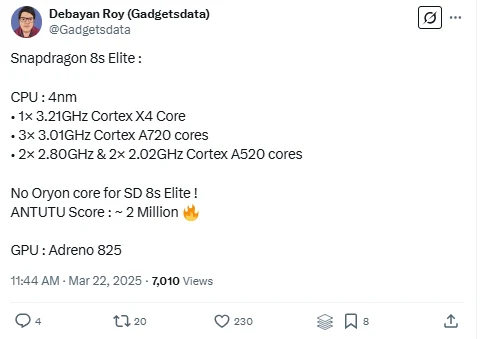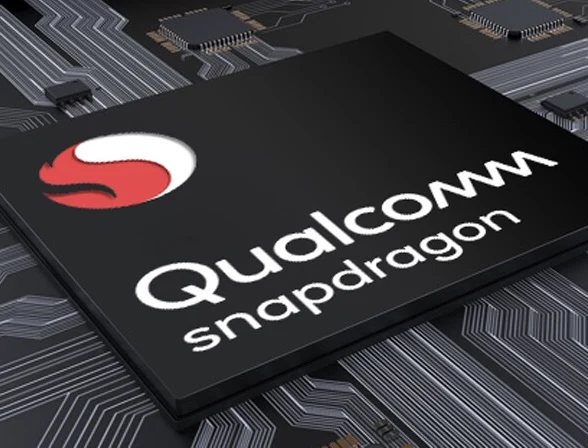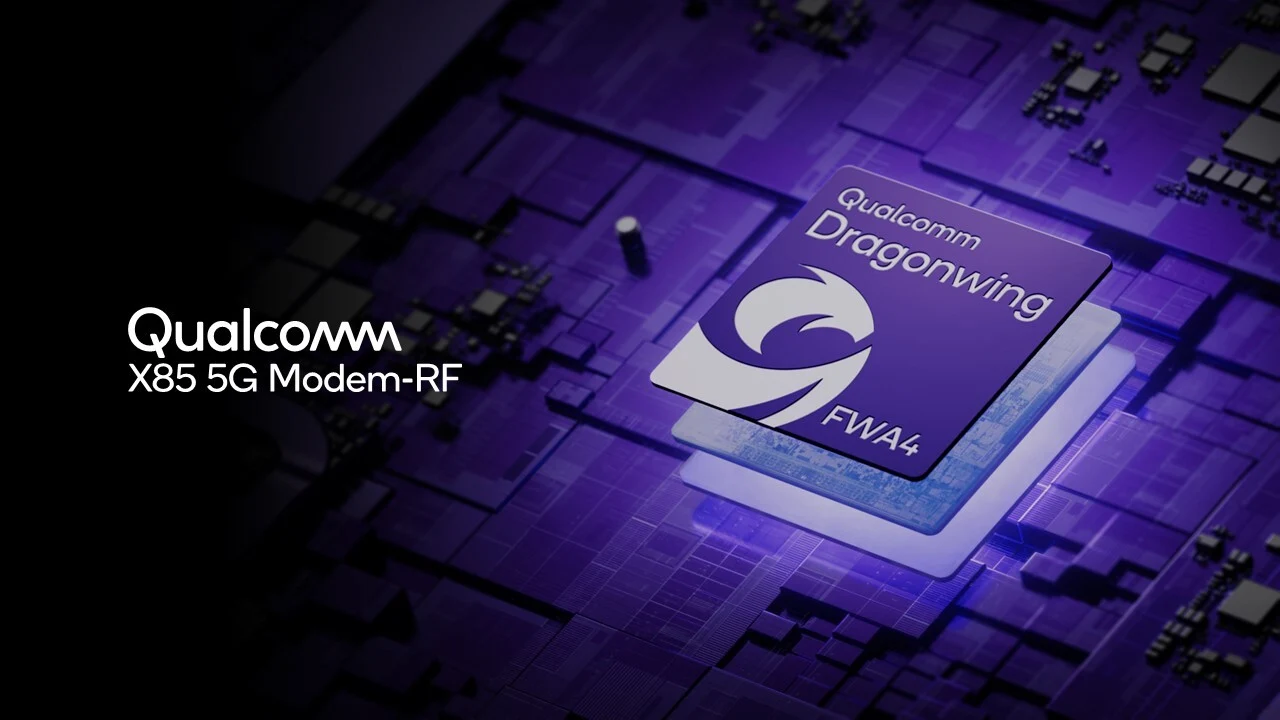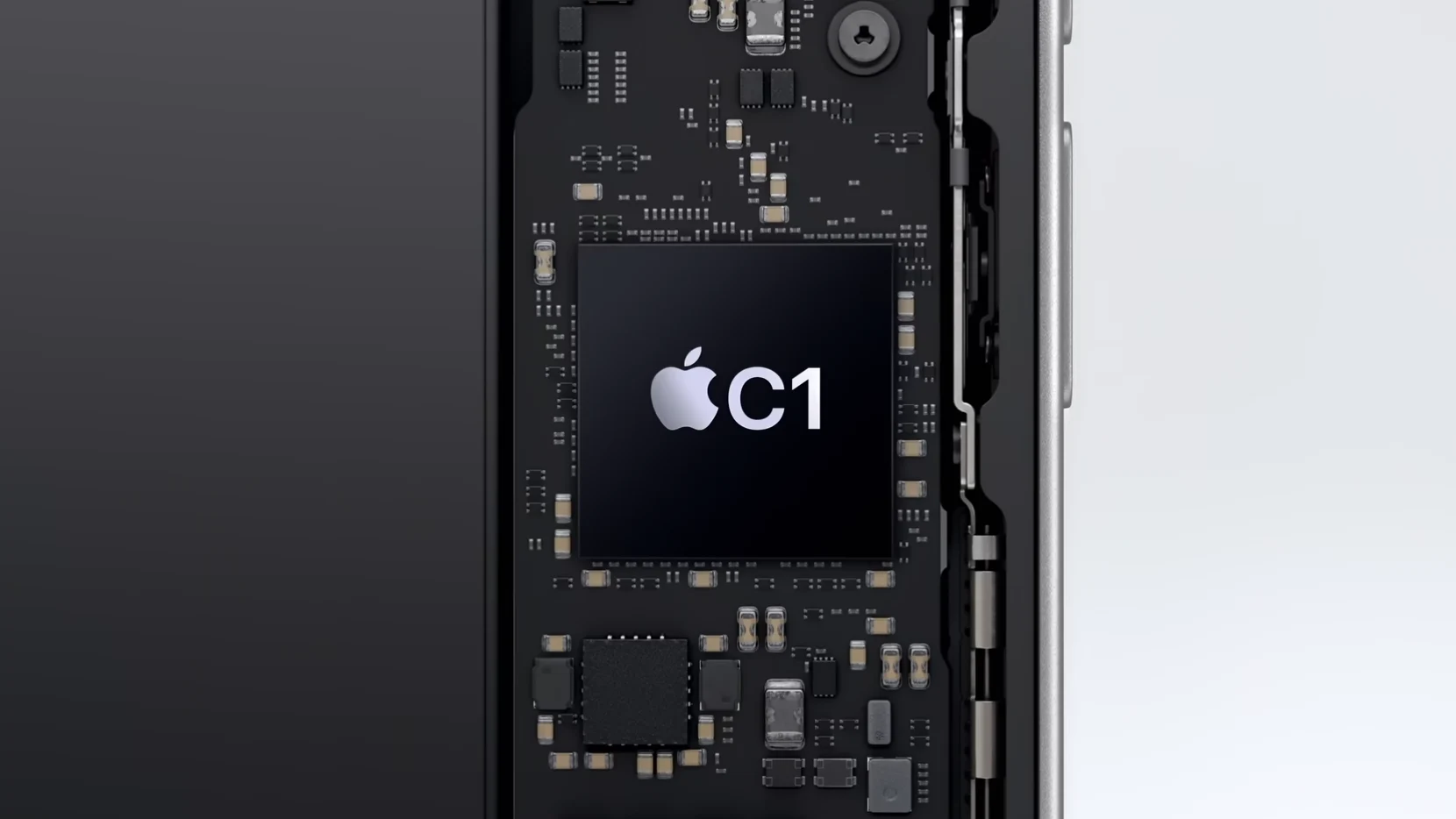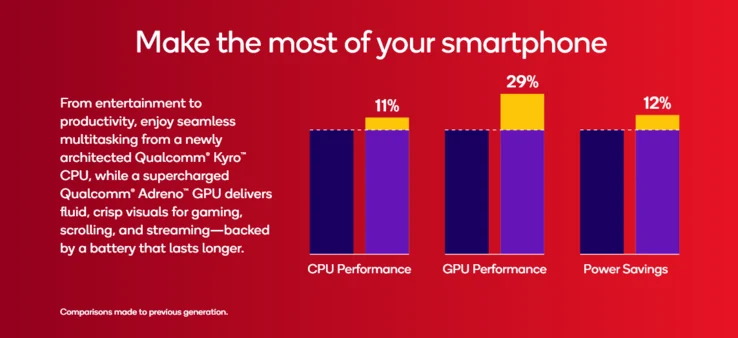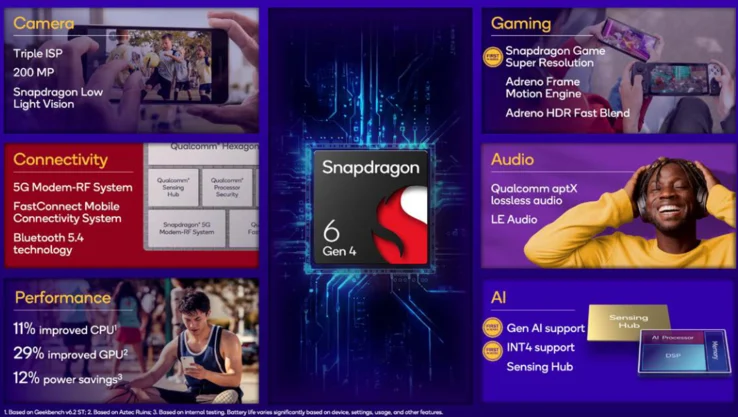Key Takeaways
1. Snapdragon 8s Elite is an enhanced version of the 8s Gen 3, not a budget alternative to the flagship Snapdragon 8 Elite.
2. It retains ARM’s Cortex architecture and uses 4nm manufacturing technology, unlike the 3nm of the Snapdragon 8 Elite.
3. The core arrangement changes to a 1+3+4 cluster, but the cores are the same as in the 8s Gen 3, with only minimal clock speed increases.
4. Graphics performance features an Adreno 825 GPU, better than the 8s Gen 3’s Adreno 735 but not as powerful as the Adreno 830 in the 8 Elite.
5. The Snapdragon 8s Elite targets the upper mid-range market, aiming for a balance between performance and cost, without competing directly with premium chips.
According to recent information, Qualcomm’s new Snapdragon 8s Elite is an enhanced version of the 8s Gen 3, not a budget-friendly choice to the flagship Snapdragon 8 Elite. This upcoming chip will stick with ARM’s Cortex architecture, avoiding the custom Oryon cores seen in the 8 Elite.
Snapdragon 8s Elite Details
The Snapdragon 8s Elite shares its foundational makeup with the 8s Gen 3, including the same 4nm manufacturing tech, which is less advanced compared to the 3nm used for the 8 Elite. Qualcomm has changed the core arrangement from a 1+4+3 cluster to a 1+3+4 cluster; however, the cores themselves remain identical to last year’s 8s Gen 3. This news may be disappointing, as many were hoping the 8s Gen 3 would feature the innovative Oryon cores found in the Snapdragon 8 Elite.
The clock speeds show only a minimal increase over the 8s Gen 3: a single Cortex-X4 prime core running at 3.21GHz (up from 3.0GHz on the previous model), along with five Cortex-A720 performance cores (three at speeds of 3.01GHz and two at 2.8GHz) and two Cortex-A520 efficiency cores at 2.02GHz. This is in stark contrast to the 8 Elite, which boasts dual custom Oryon prime cores at 4.32GHz and six Oryon performance cores at 3.53GHz.
Graphics Performance Insights
The graphics capabilities of the 8s Elite take a mid-range approach too, featuring an Adreno 825 GPU. While this is a noticeable improvement over the Adreno 735 found in the 8s Gen 3, it still falls short of the top-tier Adreno 830 in the 8 Elite. Initial benchmarks indicate the chip might score around two million points on AnTuTu, placing it somewhere between the performances of the 8s Gen 3 and the 8 Elite.
The leak also confirms previous reports of the 8s Elite appearing in devices such as the iQOO Z10 Turbo Pro, pointing towards Qualcomm’s aim at the upper mid-range market instead of launching a true flagship option. Even though the absence of Oryon cores may let down some tech fans, the raised clock speeds and upgraded GPU are expected to provide significant improvements compared to the 8s Gen 3.
Looking Ahead
As there hasn’t been an official launch date revealed yet, the Snapdragon 8s Elite stays a bit enigmatic. For reference, the Snapdragon 8s Gen 3 was launched on March 18th of last year. Despite this uncertainty, these specifications clearly illustrate Qualcomm’s game plan: to provide manufacturers with a budget-friendly, performance-focused chip that fills the gap between mid-range and flagship processors without hurting sales of their premium chips.
Source:
Link
